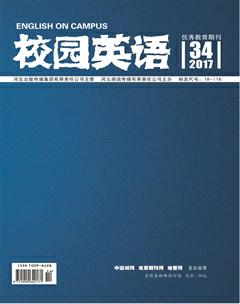On Man and Nature in The Grapes of Wrath
于飞
【Abstract】The Grapes of Wrath by John Steinbeck was published in the 30s of the 20th century, considered to be “one of the 20 books that have changed the USA”. The author severely criticized the long-standing ideas of anthropocentrism of the Western world, disclosed the political, social and economical roots of the eco-disaster in the United States in the 30s, and expressed the idea that human destiny is closely associated with that of nature.
【Key words】Steinbeck; eco-ideas; archetypal image
1. Steinbeck and his The Grapes of Wrath
1.1 Brief introduction of Steinbeck
John Steinbeck was born in Salinas, California in 1902, and spent most of his life in Monterey County, the setting of much of his fiction and received the Nobel Prize for literature in 1962. He chose to support himself through manual labor while writing. His experiences among the working classes in California lent authenticity to his depiction of the lives of the workers, who remain the central characters of his most important novels. His stories presented a majestic history of the life and times of war, human, and utterly believable characters.
1.2 Brief introduction of The Grapes of Wrath
The economic risk in America that happened in 1930s lasted for 10 years, and in 1934 and 1936 there was a series of drought happening here, too. The sate Oklahoma and its neighbor Kansas, Texas and Arkansas together with some other states became “Dust Bowl”. In the autumn, 1937, the author followed a great number of farmers which were on the tramp to the state Oklahoma. Along the road the farmers were in a desperate situation, and the author felt very shocked. At that time, he found what he had written were so meaningless and so small. He was going to describe the farmers tragedy, he wanted to speak for them. (Zhang Daokun 2006:3)
2. Nature under Steinbecks pen
2.1 Beauty of nature
In Chapter 3, the author described the natural scene and the animals in detail, though the dust storm brought disaster, the lives in the nature were still that beautiful and lovely. The description of the nature shows the beauty of nature, proclaims that the fate of the human and the nature is to be closely linked, and expresses the expectation for the beautiful future.
2.2 Destroyed nature
The disaster happened on the Plain of South America in 1930s was the consequence of being conquered, changed, plundered and devastated under the flag of “human centralism”.
Doctor Cassuto believed that the pursuing to the profit and the lack of knowledge to the ecology made the periodical lack of water a disaster. (Hu Tianfu 2006:3)
The Grapes of Wrath told us the reason why the dream of the land of happiness broke, is not because the land itself short of anything, but because the mens greedy and violence.
3. Mans fate
The human centralism led the opposition between the men and the nature, as well as the opposition between men and men. The inter-care and inter-sympathy between the small characters which under the pen of Steinbeck were the critiques to the “forest rules” that the weaks were eaten by the strongs. In that case, via the praise to the nature, the care between men and the nature, men and men;Not only did Steinbeck criticized the cruel, greedy and ugly of the human centralism that occupied the control status, but also expressed his expectation for the beautiful future. (Zeng Lingfu1998:3)
4. Conclusion
The Grapes of Wrath not only conveys the sympathy to the homeless farmers, the wrath of the people who are deprived of the land and living rights from the farmers, but more importantly, as a writer who has conscience of suffering, Steinbeck conveys his great wrath to the phenomena that the nature has been destroyed, and he criticizes the “human centralism” that had been occupying the central status for a long time, which reflects the estimable ecological thought;He proclaimed deeply the political, economical and the social origins of the disaster happened on the great plain in American Southern part, which conveys his deep worry and great notice to our human fate and his expectation for the beautiful future.
References:
[1]常耀信.美國文学选读[M].南开大学出版社.
[2]胡天赋.斯坦贝克生态思想的来源[J].南都学坛,2007,(03).
[3]胡天赋.《愤怒的葡萄》一部伟大的生态著作.2006.9.
[4]李晓华.美国1930年代经济大萧条的史诗——评斯坦贝克的小说《愤怒的葡萄》[J].山东文学,2007,(05).
[5]李征戎.愤怒的写实——评斯坦贝克的《愤怒的葡萄》[J].外国文学研究,2003,(06).
[6]徐向英.斯坦贝克的生态整体论—科学的思维和环境观, 2005.4.
[7]曾令富.呼唤灵魂深处的思想革命——试析《愤怒的葡萄》的思想内涵[J].外国文学讲评论,1998,(03).
[8]张昌宋.人与土地的和谐共处—评美国作家约翰·斯坦贝克的环境伦理观,2004.(01).
[9]张道坤.原型透析《愤怒的葡萄》的环境伦理观,2006.(01).
[10]张朝霞.鲜明的时代特色——《愤怒的葡萄》的文献意义[J].辽宁大学学报,1998,(01).

